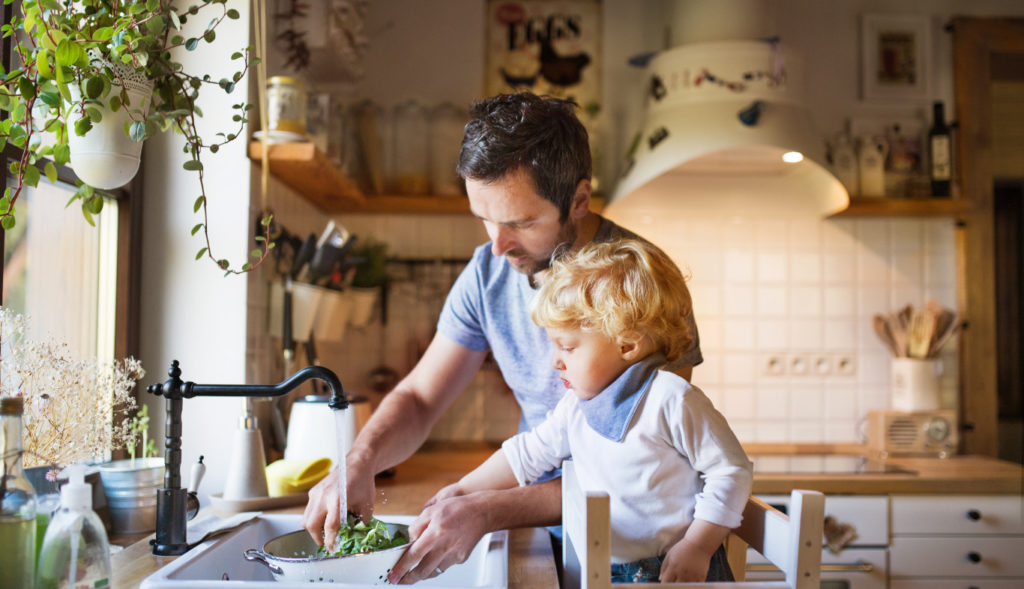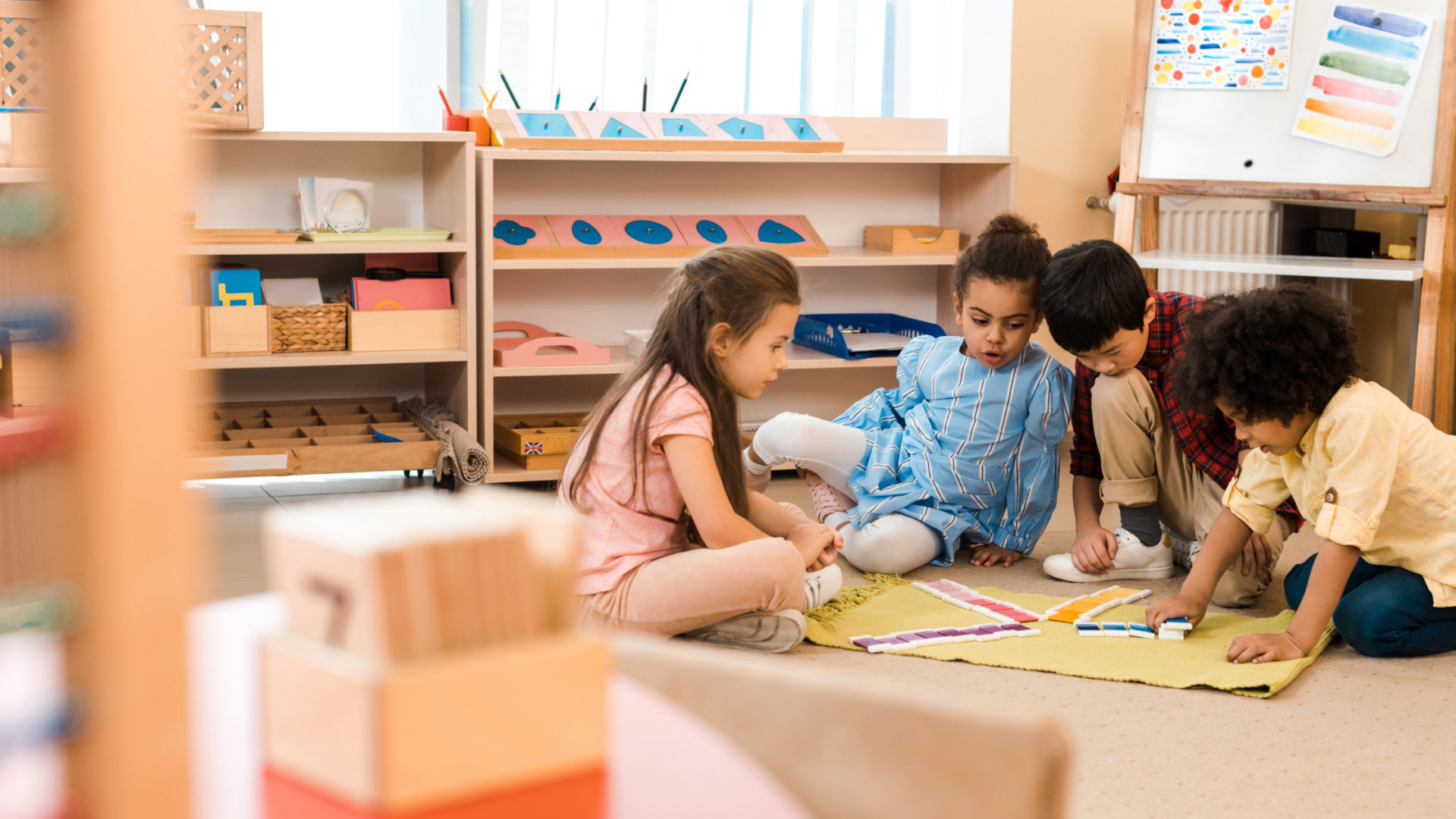Children are the future of our world. They should be given the best possible education to help them grow and develop into productive members of society. In this article, we will discuss why Montessori education is proving effective for a child‘s development, how it differs from conventional education, and how to choose between the two.
What is Montessori Education?
Montessori education was developed by Maria Montessori. She was an Italian educator who believed that learning should be a playful, natural process that is not forced upon children. Her education method fosters the child’s curiosity and love of learning without imposing knowledge or extraneous objectives.
Her method, informed by observation, asserts that education should comprise three phases: education, formation, and didactics (when the child learns how to apply what they have learned). Didactic explanations are given in a language that the child understands. The child is not exposed to complex terminology or rules until they are ready for them.
Formation: In this phase, the child is exposed to new things and experiences. They are encouraged to be independent and explore their environment. The child must be ready for this phase, as they need to handle new concepts and ideas.
Montessori education believes in children actively learning through their senses rather than through abstract thinking or memorization. Let us now understand why it is effective.
Why is Montessori Education so Effective?
Montessori education is centered on the child and incorporates a child-led approach. Montessori’s philosophy focuses on three fundamental principles: freedom, independence, and responsibility.
The Children in Montessori Environment
Children are allowed to learn at their own pace, with the educator’s support rather than in response to a curriculum. Children are free to explore objects that make up the school materials. Using materials is determined by what will best suit each child’s needs at any given moment in time. Children in these classrooms also have a time when they play on their own.
As a result of this focus, Montessori education is highly individualized, with the teacher’s role focused more on observation and guidance. Montessori education aims to allow children to develop physically, intellectually, and socially by providing a structured environment that is appropriate for the free exploration of materials and activities. This independence leads to the idea that children can teach themselves while developing into responsible individuals.
Thus, in a Montessori classroom, children are given the freedom to engage in activities that are most appropriate for them, and an atmosphere of trust and freedom allows children to learn best without worrying about being judged.
Montessori vs Traditional Methods
“The conceptions of the old schools, where teaching continues in the same way as in times profoundly different from ours, are clearly inadequate” -Maria Montessori (1949/1979)
With the growing emphasis on increasing pathways for formal education, parents these days are faced with two difficult alternatives – Montessori vs. Conventional. The two methods may appear similar in their goals, but the difference lies in their approach and execution.
Montessori education emphasizes respect for the child, freedom of movement and exploration, and practical life skills. But how does it differ from the traditional method of education?
Research has shown that when people learn with the goal of doing well on a test, their learning is superficial and quickly forgotten. Let’s look at each one and understand the true variances:
-
Model
The traditional method of schooling is considered to have a factory model wherein the students of a single age group are brought into the same classroom and have to go through a predefined syllabus. Each child has to go through the same syllabus. The Montessori method of teaching, on the other hand, is organized to the core, wherein children work calmly either single or in groups. The materials used are well-arranged on shelves to attract the child’s interest and the child learns via repeated use of those materials or resources.
-
Philosophy
Both Montessori and conventional methods have specific educational philosophies that guide children to enhance their learning. Generally speaking, the core difference is that Montessori education views children as inherently intelligent beings, whereas conventional education methods tend to view children as empty vessels that can be filled with information only through a process of memorization.
Montessori education possesses a child-centered approach and believes that every child is different. A child is considered as a motivated doer. Hence, all the lessons and activities are tailored to meet the individual academic abilities and developmental stages.
Each activity is engaging and educational. The syllabus is designed in such a way that it gives every child time and freedom to explore & master every area of academic learning. For example, one child might want to dress up, but the other is interested in painting. The primary intent behind this is for children to learn concepts and ideas. Thus, Montessori education is transformative and holistic.
In comparison, conventional education focuses on a pre-defined curriculum and teacher-guided lessons. This approach assumes that every child is the same and so is their learning capacity. Thus, only a well-structured classroom provides opportunities to introduce a variety of topics and concepts.
-
Curriculum
The Montessori curriculum comprises the topics and lessons a child will learn in school.
A Traditional preschool curriculum typically dictates a certain level of memorization and expects all the children to reach the same milestones at the same time. Teachers expose all children to the same set of skills at once, instead of letting them grow and learn on their own.
- However, in Montessori, the curriculum is well-divided into 5 learning areas:
-
-
- Practical Life: This area helps a child develop practical life skills that are essential to function in society. Practical life lessons help children to learn how to do cleaning, laundry, washing clothes or tables, food preparation, etc. This helps develop independence, concentration, grace, and courtesy. It also enhances fine motor skills.
- Sensorial: This area helps children learn about the senses and how to respond to them. This is done by exploring and experiencing your senses, such as sight, sound, touch, taste, and smell. Sensorial learning enables sensory awareness, which is essential for the physical development of a child’s brain and growth on the right side of the brain.
- Culture: This area is designed to provide children the opportunity to learn about the culture of their immediate environment and how it affects them. Culture curriculum in the Montessori classroom helps a child learn about history, art, music, science, and geography.
- Language development: In this area, Montessori education helps children develop language skills. It helps the child improve their speech, vocabulary, reading, and writing skills. It involves letter identification, tracing correctly, phonics, and pincer grip.
- Math: Children learn the basic and necessary skills that are required for developing their natural talents in math, such as geometry, arithmetic, and algebra. They can start with basic mathematical concepts such as counting, patterns, etc., and work their way up to more complex ones at the right time, usually not too long after.
-
-
Teaching Methods
In the Montessori approach, a teacher introduces a child to the concept and lets the child learn through exploration. The classroom is a structured environment that is prepared with materials that help children progress at their rate. Once that interest is developed, it gradually increases in complexity. The Montessori materials help children with self-education and self-correction on their own as they explore.
In conventional schools, teachers follow a predefined curriculum and lessons. Every child learns the same lesson that is being taught by the teacher. The learning method in traditional schools is based on learning, repetition, and reward, rather than experience.
-
Classroom Environment
With light-colored walls, no posters or charts on the walls, and shelves stocked with hands-on materials that support the development skills of the child, Montessori classrooms are warm and welcoming. Rooms have child-sized furniture arranged in an organized manner that allows easy exploration and creativity. Activities are arranged neatly on shelves, with no clutter.
In contrast, traditional classrooms comprise desks, and chairs arranged in rows or groups. Notably, they are also child-sized.
-
Children’s Age Group
The Montessori classroom includes mixed-age groupings of children to allow them to benefit from each other’s experiences. Typically, Montessori schools group children into multi-age classrooms with children of three to four different ages based on their aptitudes (i.e. 0-3, 3-6, 6-12, 12-18 years). Mixing ages exposes students to a wider variety of complex social interactions, which can help them communicate in a diverse group.
This mixed-age grouping is where Montessori education and Tradition education are different. Where Montessori classes are multi-age groupings, Traditional classes are typically single-age groupings where the children are generally of the same age.
-
Class Size
There are usually more students in a Montessori class compared to other preschool programs. In a Montessori concept, a child learns better when interacting with peers. As students interact among themselves in the Montessori classroom, they develop language skills and learn about being part of a community.
Traditional Classroom sizes vary from one school to the other. Some have low enrollment to maintain small class sizes, while others have larger ones.
To Summarize this Discussion:
| Factors | Montessori Education | Traditional Education |
| Philosophy | The child-centered approach believes that every child is different and so does their learning. | It believes Children learn best in a predefined curriculum and teacher-guided lessons. |
| Area of Focus | Overall development of the child. | Pre-defined curriculum and books. |
| Curriculum | Has a flexible curriculum. | Has a rigid curriculum. |
| Classroom ambiance | In Montessori classrooms, the room is strategically prepared to encourage self-education and self-discovery. There are shelves of materials that children can choose from. Children can work on the floor or at an appropriately sized table. | Typically comprises desks in rows facing one direction so that a teacher can present lessons to the class. |
| Activities/ Learning lessons | Children have the freedom to choose activities from neatly organized shelves. Every child will learn from performing different activities they are interested in doing. | Children learn from the activities that the teacher teaches/ organizes. |
| Age groups | Classrooms are divided into 4 multi-age groupings: Toddler (0-3 years), Primary (3-6 years), Lower Elementary (6-9 years), Upper Elementary (9-12 years), and Erdkinder (12-18 years) | Classrooms are typically divided into 12 grades based on age (e.g. Grade I, Grade II, and so on). No multi-age groupings. |
| Expected Learning Pace | Children learn at their own pace. | Children learn at the teacher’s pace. |
| Emphasis | Social-emotional learning. Acquisition and development of age-appropriate skills. | Academic achievement through memorization. |
| Measured by | Skills mastered by the child. | Grades and extrinsic rewards in the tests conducted. Standardized tests. |
In the End
The conventional models of the child and the school on which they are built—the empty vessel in the factory—do not match how humans learn, and conventional schools have not performed well. Because they do not alter these fundamental models, the solutions to our schools’ issues that have been proposed have frequently failed. Instead, the educational system ought to rely on scientific research into how children learn. This illustrates the importance of revising these fundamental models.
Just such an approach was taken by Dr. Maria Montessori in the early 20th century. Her insights are important because they are like educational principles developed by contemporary psychological research. Even when we have these comparisons drawn, it is a parent’s prerogative to decide the best for their child. For some parents, a child’s overall development holds significance, while some parents regard a defined curriculum to be the best bet.
Whatever the choice may be, the decision should be influenced by the best interests of the child because every parent wants the best for their offspring. We just need to remember that every child has unique gifts, challenges, and learning processes when deciding.
A Complete Guide on How to Setup Montessori at Home
Montessori education has been proven to be one of the best systems for children, as it teaches them how to learn through self-discovery and has a strong focus on the development of the whole child. The Montessori activities are thus designed to be easily set up in a home setting. It is because of its principles; Children are often better equipped to deal with situations like the pandemic.
The Montessori approach values the individual child’s learning style, interests, and abilities. An example of a Montessori classroom is provided by Dr. Gail Anderson, found in “Montessori Teaching and Learning: The Children’s Work” (2012). It describes a Montessori classroom: “During the Montessori method, teachers act as facilitators and guides rather than instructors. They provide children with materials that are age appropriate and offered these materials to them. The teacher provides guidance on what material is appropriate for the child to be learning at each stage, and then the child provides materials for the teacher.”
What do you mean by Montessori at Home?
Montessori at home is about setting up a home environment that fosters the development of independence, self-directed learning, and social skills. For example, providing a child-safe ladder that helps children to reach the kitchen counter and prepare food for themselves or a child-height wardrobe so that they can themselves reach and choose the clothes they want to put on.
It is relatively easy to set up a home environment that is Montessori in nature. In such a space, children can touch, choose, explore, and experiment with the activities used in everyday life. One can use open-ended toys or easy-to-set-up practical life activities. The idea behind it is to give the child an environment that enhances the child’s development needs, but also, it should be aligned with the Montessori principles.
10 Ways to Set up a Home Environment in Line with Montessori Philosophy
The basic principles of creating a home environment that conforms to Montessori philosophy are:
- Create a home environment that is calm, simple, and organized with the use of natural materials such as wood and clay. To do so, one can include:
- A child-friendly shelf or cabinet in the kitchen: Setting up a child-sized kitchen shelf is one of the simplest ways to encourage your children to be independent and show you trust them. It helps a child learn about food preparation, cleaning, and washing.
- Have an activity shelf: An Activity shelf is an open cabinet where various activities are kept based on the child’s development needs. It should be easily reachable to the child so that they can choose and pick the activities that they are interested in exploring. It promotes a feeling of ownership and simplifies the home environment to one where a child is given responsibility. Allowing children to keep the activity back on the activity shelf helps them learn organizational skills.
- Provide a disturbance-free area: We should provide a dedicated area in the house where they can perform an activity of their choice. It can be a chair & table or an open area.
- Have a reading place: It is also one of the simple yet effective ways to create independence. This way children have the freedom to choose, read, explore and do research.
- Have a dressing shelf: Adding a child-sized dressing shelf helps them.
You don’t need an entire room dedicated to setting up the Montessori environment at home. Even a small area can create a difference in our child’s learning path.
- Keep decor simple and accessible: Do you know we all function better in calming environments? Light-colored walls and clutter-free furniture, including posters, cabinets, beds, etc help a child focus more on activity and learning out of it. Furniture should be made of wood or natural material.
- Provide Opportunities for Self-Directed Learning: Provide opportunities for your child to have self-directed learning time. In this way, they can discover what interests them and see what sparks their curiosity.
- Less is more: Often, parents and relatives buy toys that are just for entertainment, such as soft toys, battery-operated toys, etc. These toys don’t fulfill any development needs of a child, but rather just clutter the space. Lesser toys create a calm and less chaotic home. It fulfills the development needs of a child and boosts focus and concentration. It also leads to less anxiety and more creativity for children.
- Allow Your Child to Work Independently: Allow your child the opportunity to work independently without you constantly supervising them. This will allow them the independence that they are not used to, but will also help them build their confidence and skills. Do not instruct them on what is right and what is wrong. Let them explore and learn by doing.
- Allow Your Child to Tackle Problems: Teach your child how to approach difficult situations and solve them on their own by letting them tackle problems that are challenging to them. There are many activities in Montessori that allow children to solve problems, such as opening and closing containers, opening and closing locks with a different set of keys, preparing food for themselves, and many more. These activities are simple, easy to set up, yet fulfill the purpose.
- Provide Consistency: Establish a routine for your child and make sure that you spend time with them each day. There is no need to rotate the activities every day.
- Observation: Observe the child and see whether they can complete a task without any help and at what time. What strategy are they following? Are they able to solve the problem? What are they interested in doing? And many more. Based on these observations, set their routine, and provide them with enough activities to play. Also, make sure these activities are accessible to the child.
- Connect With Others: Talk with other parents in your neighborhood and within your community to get advice on how to help your child develop their interests. It helps a child to develop social and emotional skills.
- Allow Your Child to Grow by Making Mistakes: Let your child make mistakes and learn from those mistakes. It helps a child to understand the process and develops problem-solving skills.
8 Best Tips to Set up Montessori at Home
- Use furniture keeping children in mind.
- Create an environment that is engaging, stimulating, and aesthetically pleasing.
- Have activities and materials set up in trays.
- Prepare the environment by providing age-appropriate activities arranged on the shelf.
- Create a place for everything and everything in its place.
- See the space through the children’s eyes.
- Rotate the activities frequently.
- Create a space where you can do things without needing assistance from others.
Why Should We set up Montessori at Home?
Each one of us will agree that a child’s learning path starts at home and parents are the front line of educating children. They are the first teacher that children are exposed to. Children grasp and learn best from their home environment. They apply the same learning in later years of development. The Montessori method also follows the same concept, by providing opportunities for children to do hands-on activities in a stimulating environment.
Research has shown that children who are raised in an environment that honors the child have better social skills, are more creative, and are more self-sufficient than those who aren’t. In order for a child to grow and develop in the best manner, parents should provide a home environment that is conducive to learning.
Benefits of Setting up a Home Environment in Line with Montessori Principles
Setting up Montessori at home helps us to provide our children with more meaningful and engaging activities.
- It helps to create a space that is chaos free.
- It teaches children the importance of various activities that are required to do daily chores.
- It helps in making a child independent to do every task.
- It boosts a child’s concentration and teaches them to become responsible in each environment.
- It helps to build spatial awareness.
- It allows the child to achieve a skill better with more focused activities.
Final Words
Setting up a Montessori home can be very rewarding for both parents and children. I hope these ideas serve as inspiration to make a few changes today and set up your home environment that promotes independence to do daily chores. In our homes, we can always work to make things more accessible, attractive, and engaging for our children.
8 Misconceptions About Montessori Education
Even though Montessori education has been in existence for over 100 years, it is still a very misunderstood method of instruction. According to the National Center for Montessori in the Public Sector (NCMPS), there are approximately 20,000 Montessori schools worldwide. The USA Montessori Census has so far attracted over 2,700 Montessori schools.
This implies that, while most people have heard of the Montessori approach, they might not have been in direct touch with students or parents who have attended a Montessori school. This has given rise to several misconceptions concerning this early childhood education model.
The misconceptions and skepticism individuals have about Montessori philosophy are largely caused by a few of these fallacies. When comparing diverse educational philosophies, it’s critical to weed out misinformation and base conclusions on truthful information.
Today we’re going to take a look at several criticisms/myths and then let you in on the reality regarding Montessori education. Let’s start with the one that gets our goat more than any other… I bet you can guess why it does!
Criticism #1: Montessori Classrooms are Chaotic
Montessori education is a child-centered approach to learning where independence and freedom without limitations are encouraged. For an outsider, the Montessori classroom appears chaotic, as children sit everywhere and work. However, the educators have carefully constructed this atmosphere depending on the children’s developmental needs. Children are free to move and explore, but only within the boundaries established by the educators. The idea behind this is, that when children are allowed the freedom and independence to discover what interests them, they are more motivated to learn and concentrate. This setting reinforces the fundamental Montessori idea of freedom within boundaries.
Criticism #2: No Curriculum to Follow
It is believed that the same fundamental skills are taught in Montessori schools with a demanding academic curriculum. According to statistics, children who receive a Montessori education frequently outperform their traditional school peers in terms of academic achievement. The Montessori method recognizes that, when complicated concepts are presented practically, children can understand them. Additionally, Montessori students are free to study subjects that interest them personally, which increases motivation.
Criticism #3: The Montessori Method is only for Preschoolers
Montessori approaches are entirely focused on the child. As a result, they are successful with all children and would benefit both self-learners and children with learning impairments. These strategies do not differentiate children depending on their learning capacities. Montessori schools, in reality, are beneficial to a wide range of learners. Montessori education is intended to reach all types of learners, including visual, auditory, and kinesthetic learners. Furthermore, when working with small groups, Montessori educators are able to identify each learner’s particular strengths and shortcomings.
Criticism #4: There are no Rules in a Montessori Classroom
It is said that there are no rules that are followed in a Montessori classroom. Contrarily, because they are accustomed to independence within boundaries, Montessori students exhibit more self-discipline than students who attend traditional schools. They consequently become automatically geared to act more disciplined. Since children comprehend the repercussions and are aware of the situations that need to be avoided, this discipline is instilled in them without the use of sticks or punishments.
Criticism #5: Montessori Students are Unprepared for “Real School”
While a typical school will undoubtedly be different for a child trained in the Montessori Method, their previous experience will have properly prepared them for the transition. Montessori education prepares children to be independent thinkers with strong social skills, attention, and an innate love of learning! According to studies, children who got an early Montessori education outperformed their peers in math, reading, social development, and executive function.
Criticism #6: Montessori Classrooms are Just Fun and Games
Children from three to six years old do not discriminate between work and play. Their play is their work in the Montessori classroom. They have fun and communicate with others. Curriculums in art, music, and theatre allow for creative play in the Montessori classroom. They learn many skills that are not learned in a traditional classroom, such as food preparation, laundry, art and craft, and many more.
Criticism #7: Children Do not Receive Grades or Take Tests
If you ask a random person what they know about Montessori education, you could hear that Montessori schools “don’t do tests” or “don’t grade anything.” While Montessori education does not emphasize test-taking in the same manner that many current educational frameworks do, this does not imply that Montessori students are inexperienced with testing or perform poorly on standardized tests. In reality, the research shows the exact opposite. They believe in improving skills that are required to learn a particular topic, and once the skill has been learned, they move on to a new topic. In other words, they believe in learning through experience and practice.
Criticism #8: Montessori Education is Expensive
When compared to free public education, any paid childcare may appear expensive. However, because we only have children who are infants, toddlers, or preschoolers, the only true comparison is paid daycare versus paid Montessori. When you compare these two prices, the difference isn’t that significant.
Some parents who pay for Montessori daycare or preschool send their children to public school. These are the parents who recognize that if their child is going to be in daycare during the day (and if they are going to pay for childcare nonetheless), they may as well benefit from what the Montessori technique can provide for their children.
Closing Thought
The Montessori technique is quite complex, with many moving elements, which might lead to confusion among prospective families. Each classroom’s curriculum, as well as the planning of each school day for each child, is meticulously planned. Montessori education has picked up some perplexing myths over the years. With such a long and well-documented history as an educational concept, some misconception is unavoidable.
For more Montessori-related study material, Visit our website.
8 Ways in Which Montessori Education Can Help Your Child Succeed
Montessori education is an educational model that follows the principles established by Maria Montessori. It is a child-centered approach to education, and the methods used in Montessori education focus on nurturing children’s natural abilities and talents in an environment that encourages independence and self-directed learning. But how does Montessori education help in a child’s development?
In this article, we will talk about the fundamentals of Montessori education and its benefits, starting with outlining what it is.
What is Montessori Education?
Montessori education was introduced in 1907 by Dr. Maria Montessori, a famous Italian physician, and educator. It is a teaching and learning method that is meant to be set up in a school setting, but elements of it can also be adapted/adopted in the home.
Montessori education is a method of teaching children to develop or achieve their potential. It assumes that children are curious by nature about their surroundings and can be educated in an environment that encourages this curiosity.
The materials and activities in Montessori classrooms are designed for children to explore and learn through hands-on activities.
Teachers are called educators/guides at Montessori schools. They do not instruct a child based on the curriculum but guide and inspire them in their exploration and discovery. They provide an age-appropriate environment, learning materials, and guidance to boost their overall development.
“The teacher’s task is not to talk, but to prepare and arrange a series of motives for cultural activity in a special environment made for the child.” — Maria Montessori (in The Absorbent Mind)
This philosophy makes the Montessori method different from traditional education methods. It allows children to learn by doing and observing, which helps them develop skills such as concentration, self-discipline, and independence.
What are the 5 Key Principles of the Montessori Method?
According to the Montessori approach to education, children are the focus of the environment and activities. This encourages children to learn subjects through natural curiosity and exploration, not by the rote curriculum.
Children learn through concrete experiences, and exploration with materials directly related to their interests. They believe that all children possess innate intelligence, and the job of educators is to support it and foster its development.
Montessori education is based on 5 general principles:
1. Respect for the Child’s Need
The Montessori method is based on the principle of respect for every human being. Respect is given by allowing children to make their own choices, learn by doing, and learn for themselves. It promotes child-led learning. Conflicts are resolved peacefully and observed without judgment.
2. The Absorbent Mind
Montessori education is based on the principle that children are constantly learning from the world around them through their senses. They then make sense of it because they are the best explorers in the world. Children can develop strong neural connections through their senses, laying the foundation for future memories and knowledge.
3. Sensitive Periods
Montessori pedagogy believes that certain skills are most easily learned during specific periods of time (specific ages). This period is known as a sensitive period. A child goes through eleven sensitive periods between birth and 6 years. It includes order, movement, grace and courtesy, small objects, refinement of the senses, music, writing, reading, language, spatial relationships, and mathematics. A sensitive period lasts until a child gains a particular skill. The order in which sensitive periods occur and their timings vary from child to child. Educators and parents must identify such periods by observation. Based on the observation, a learning path must be prepared to enhance those skills.
4. Children must learn to learn
A core notion of Montessori education is that a child does not know how to learn from birth. In other words, they must follow the path of self-directed learning: pay attention, remember information, think independently, and act on their own initiative.
Montessori education philosophy asserts that a child can learn by themselves or by doing. This type of learning is known as auto-education or self-education. In Montessori education, the role of an educator is to help provide the environment, inspiration, guidance, and encouragement for children to explore and self-educate.
5. The Prepared Environment
In a Montessori school, children are provided with a classroom environment that has been “prepared” to help them learn through discovery. This is referred to as a “prepared environment.”
“The first aim of the prepared environment is, as far as it is possible, to render the growing child independent of the adult.” – Maria Montessori (in The Secret of Childhood)
The environment is always child-centered. It should promote freedom for children to explore materials of their choice. Educators should prepare the learning environment by making materials and experiences available to children in an orderly and independent manner. While designing the curriculum, these 5 principles are kept in mind. Let us now understand the Montessori benefits.
Benefits of Montessori Education to Help Your Child Succeed
Montessori education provides a holistic approach to learning and development. It offers many benefits, but here are seven ways in which it can help your child succeed:
-
- Promotes academic success: It provides children with opportunities for meaningful interactions by using a variety of materials (a true hands-on experience). Resulting in overall learning and academic success.
- Promotes social and emotional development: It provides children ample opportunity to practice various skills that promote interpersonal understanding, respectful relationships, and emotional regulation. It encourages them to work and grow with others in a community setting.
- Fosters independence, creativity, and self-control: It helps a child perform an activity/task independently and learn through discovery. Other children do not interrupt the one performing the task. They can stand and observe the child performing the task. They do not even pass any judgment on what is right or wrong.
- Fosters compassion and empathy: Montessori education teaches a child a sense of kindness and empathy. It is an approach to learning that emphasizes respect for the child and an understanding of their world. The educator takes a natural approach to teaching, which includes fostering emotional growth, compassion, and empathy in children.
- Fosters self-discipline: Montessori education instills the idea that children should be independent, self-directed, and self-controlled. It instills the idea that children should be independent, self-directed, and self-controlled. It promotes the idea that children should take responsibility for their actions.
- Promotes and supports a healthy lifestyle: Montessori schools are known for their highly individualized education. In a Montessori school, children are encouraged to pursue interests in many areas, including art, music, and science. Children here learn to eat, cook, do daily chores, read, learn, and make healthy choices, as it emphasizes a child’s sense of wonderment. It develops perseverance, courage, and resilience in children by developing both physical and mental strength.
- Develop curiosity, decision-making, and problem-solving skills: Montessori education enhances a child’s natural curiosity and allows them to discover the world around them without being overwhelmed.
- Develop executive function: Montessori education promotes the development of executive skills (a set of mental skills that includes working memory, flexible thinking, and self-control) that further help them every day to learn, work, and manage daily life.
Final Takeaway:
The Montessori approach not only boosts a child’s developmental growth but also encourages their natural curiosity. It provides varied activities that lay the foundation for lifelong learning. It is one of the most beneficial methods for teaching children of all ages.


















